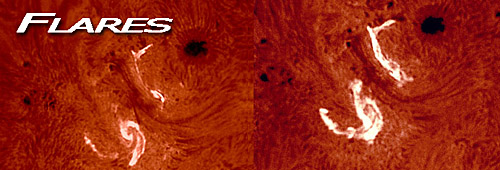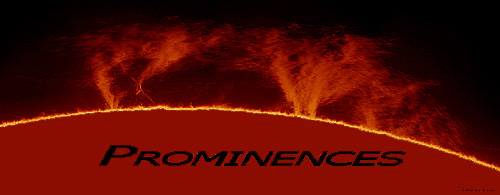Is this safe?
When using our solar filters as directed, it is perfectly safe to observe the Sun. DayStar has been producing the world’s gold standard for safe and affordable solar filters for over 50 years.
Will this work with my telescope?
Refractors F/4-F/9 use our Classic Quark with integrated barlow.
Refractors F/5-F/14 use our Combo Quark with 2.8x barlow.
Refractors F/15 and up use our Combo Quark with no barlow.
SCT telescopes use our Combo Quark with a wedge adapter and off axis ERF. It may be cheaper to get a dedicated small achromat telescope.
Maksutov telescopes use our Combo Quark, or our special version for Questar.
Dobsonian and Newtonian telescopes are a poor choice for solar because they usually have apertures larger than daytime seeing can support, open trusses that can be dangerous, and often have insufficient infocus travel. It’s usually cheapest to buy a dedicated small achromat refractor.
Smart telescopes or any telescope that integrates a camera with the optical tube are not compatible with our products.
Can I see solar flares?
Short answer yes, long answer is that the general public often confuses solar flares with prominences. Prominences stick out from the limb and are almost always visible. Solar flares are very energetic bright areas like explosions that happen rarely and may only last for a few minutes.


Do I need an energy rejection filter?
For telescope apertures 80mm and under, nothing is needed. From 80mm to 120mm we recommend a UV/IR cut filter be placed in front of the telescope diagonal. For 120mm and up we recommend a custom made Energy Rejection Filter. Of course our dedicated scopes already include any necessary filtering.
Why do I need power to the filter?
Our narrowband solar filters are constructed from a natural mica crystal etalon filtering element. It must be tuned to the Hydrogen Alpha wavelength of 6562.8 angstroms, which is accomplished by heating it to a factory calibrated temperature. The thermal expansion of the mica is what tunes which wavelength is passed. Our filters use microcontrollers to precisely control the wavelength, making it easy to get the best performance possible out of the filter.
Can I use an oil spaced or Petzval refractor?
Historically DayStar advised against these types out of an overabundance of caution. For oil spaced Astro Physics telescopes, company owner (and DayStar user) Roland Christen has advised that the oil will not be affected by sunlight and they are OK to use with DayStars. Larger apertures should of course use an Energy Rejection Filter.
Petzval refractors should be OK as long as the optics are clean. The main concern is that after reflecting off the blocking filter, sunlight could come to focus near the rear element(s). This should not present trouble as long as the lenses are clean so that virtually all light transmits back out of the telescope. If during use you see a very bright small backlit dot on the rear lens group, you should exercise caution.
Our largest concern now is the emergence of poorly constructed refractors out of east Asia with plastic internal baffles. If the telescope is pointed off of the Sun then concentrated light could melt a plastic baffle. Real telescopes use metal baffles and are immune to this problem. Plastic baffles can be spotted by the telltale injection mold ejector circles or sometimes by a very thick beveled look to the baffle edges. Be very careful to never leave such a telescope pointed slightly off Sun for any length of time, even seconds, as the baffles could melt and smoke could cloud your optics.
The filter is just black, I don’t see anything.
Move your head up and down, back and forth slowly until you are sure your eye is in the narrow cone of light. Please also read about How to Find the Sun for more tips.
The buttons on my Quantum stopped working.
You have probably inadvertently activated Button Lockout Mode, which is intended to prevent accidental tuning adjustments. Unplug the power cord. Hold down both red and blue buttons while plugging in the power cord to toggle the setting. In the future make sure the buttons are NOT pressed when first applying power. Due to frequent user confusion we have removed this feature from most products effective November 2020.
The filter never comes to focus.
With Quark and Quantum filters, make sure they are installed AFTER the mirror diagonal in your telescope. If you can’t use a diagonal, you will need an extension tube around 3 inches long in order to reach focus.
You may also be inadvertently looking at the eyepiece field stop or filter edge rather than the Sun’s limb. Check around other places in the field of view.
Rack focus slowly all the way from end to end. Focus might not be anywhere near where you are used to setting the focuser position with an eyepiece or camera without a filter.
Imagers should be careful with any focal reducers – they should be installed just in front of the camera and not farther ahead.
Sometimes seeing is so poor that it seems like you can never achieve a sharp focus. You may need to try another day or in a different location, like a grassy field.
I can’t see the full disk.
Quark filters have a 4.3x telecentric barlow in order for the filter to perform properly. Therefore telescopes with a focal length longer than about 480mm cannot pass the full disk of the Sun. For telescopes up to about 700mm in focal length, our Combo Quark with the 2.8x barlow is a better option.
You will need a much wider eyepiece than you may be accustomed to using. Quantum filters should be used with 32 to 55mm eyepieces, Quark filters with 20 to 40mm eyepieces.
Imagers can use one of our focal reducers (available in 0.6x, 0.5x and 0.33x) to increase their field of view when using small imaging sensors. When attempting mosaics we recommend use of our Flat Cap.
Of course it must be said that when you can see the full disk you are missing out on seeing the small details that change so dynamically on the Sun.
How do I remove light bands from my images?
Newton’s rings or interference patterns occur when your image sensor is too flat and too parallel to the filter. Use our Interference Eliminator or Tilt Adapter or Reducer/Tilt accessories to move the camera off perfectly parallel. We recommend 2 to 5 degrees of tilt as a starting point. Beware of other manufacturer’s tilt accessories intended for nighttime use, as these do not have sufficient tilt range for solar.
How do I remove dust spots and nonuniformity from my images?
Nonuniformity can be caused by dust, vignetting, or even the natural crystal structure of the mica etalons used in our products. Use our Flat Cap to take a calibration image in order to drastically improve the appearance. Light leaks are best solved by covering the offending joint with black electrical tape.

